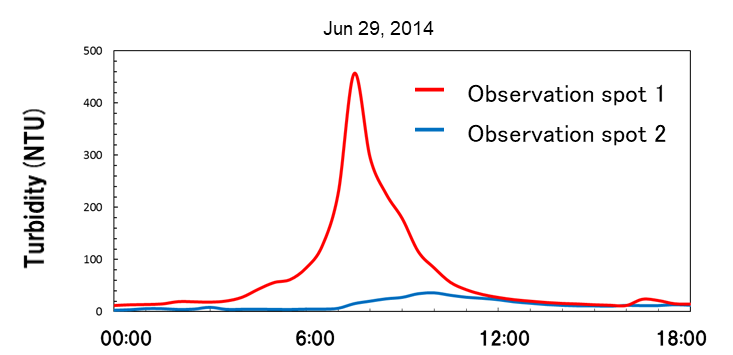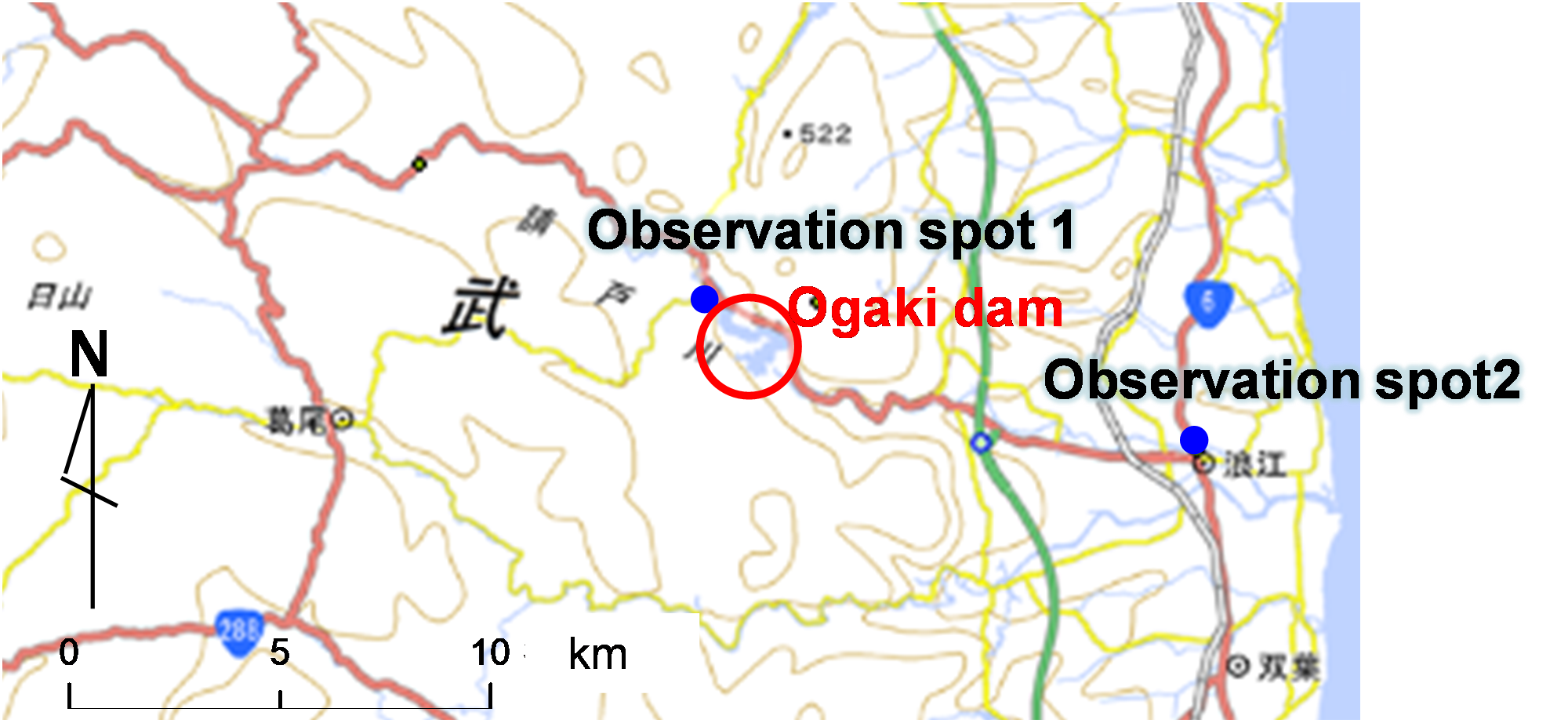Radioactivity Dynamics in River System
(2015)
QWill radioactive contamination continue to accumulate in reservoirs due to the inflow of radioactive cesium from rivers? 【Effect of the upstream dam on 137Cs accumulation in the riservoir beds】
AInvestigations at the Ogaki dam in Fukushima Prefecture have revealed that radioactive cesium from the upstream absorbed to sediment is deposited in the dam lake. The deposition of radioactive cesium in the dam lake reduces the migration of cesium to the downstream river.
-

Fig.1 Change of turbidity by heavy rain on Jul 16, 2015 at the upstream (observation spot 1) and downstream (observation spot 2) of Ogaki dam
-

Fig.2 Change of turbidity by heavy rain on June 29, 2014 at the upstream (observation spot 1) and downstream (observation spot 2) of Ogaki dam
- The results for the turbidity change during heavy rain (left figure) show that the time at maximum turbidity at spot 2 (downstream of the Ogaki dam) is more than 2 hours later than that at spot1 (upstream of the Ogaki dam)
- The turbidity originates from sediment particles. Downstream of the Ogaki dam the turbidity is lower by one order than that in the upstream.
- Migration of radioactive cesium adsorbed on sediment particles is reduced by Ogaki dam.

Fig.3 Map of observation spots upstream (spot 1) and downstream (spot 2) of the Ogaki dam
Map is cited from Map data by Geographical Survey Institute
Related articles
- Will radioactive contamination continue to accumulate in reservoirs due to the inflow of radioactive cesium from rivers? 【Tendency of the change of the concentration in reservoir beds】
- Will radioactive contamination continue to accumulate in reservoirs due to the inflow of radioactive cesium from rivers? 【Technology for prediction of the future concentration of 137Cs】
- Does radioactive cesium move from the ground surface to underground or into groundwater? 【Movement in the water flow in the litter layer】
- Does radioactive cesium move from the ground surface to underground or into groundwater? 【Movement in underground water】
- Does the concentration in river water change before and after forest fire? How did it change by time?
